Cross-selling is a sales tactic that is used to increase income by encouraging customers to buy complementary products in addition to their order.
Remember the last time you bought a smartphone or ordered a burger. You were definitely offered a case or fries and a Coke. That’s the way cross-selling works.
However, there are a lot of facts and details related to this sales tactic. That’s why it’s a good idea to get acquainted with them before you develop your own cross-selling strategy.
Why do you need cross-selling?
Let’s look at the advantages of a well-thought cross-selling strategy.
There are a lot of reasons why your business needs cross-selling. Have a look at the most important ones to make sure this sales tactic is just what you need.
ROI increase
An obvious advantage of cross-selling is that it will increase in both the conversion rate and revenue per sale. According to data provided by Amazon, 6% of its revenue is the result of upselling and cross-selling. By implementing this technique, managers can constantly improve the financial outlook of a business.
Contribution to Customer Loyalty
The main benefit of cross-selling is the opportunity to offer your customers things that may come in handy. If you provide them with really useful items, your clients will see that you take care of their needs. That’s why cross-selling is directly linked to customer satisfaction and loyalty.
Your main task is to inform your customers about items that may stand them in good stead. With the help of cross-selling, you can cope with this task. Furthermore, it’s a sure way to establish good relations with your clients and provide them with an option to select the best products available.
What’s the difference between upselling and cross-selling?
First of all, you need to understand that both upselling and cross-selling are used to increase your income and improve the buying experience of your customers. Nevertheless, there are some differences between these techniques.
Upselling encourages people to purchase a better version of the same product or pay for its upgrades and improvements. For instance, if your client buys a mobile phone, and you offer them a newer model instead of the chosen device, you are upselling.
At the same time, cross-selling is used to promote more items within the common product category. For example, if a person buys a mobile phone, you also can offer a wireless charger or a phone case.
How can I cross-sell effectively?
You can offer complementary items right on your product page, at the checkout, in an order confirmation email, or post-purchase email. With the help of emails and direct calls, you can convince your clients to purchase more useful products. However, it’s important to follow the two guidelines explained below.
Know your clients
You won’t be able to sell anything to a person if you know nothing about them. First of all, you should create your buyer personas. This is a generalized representation of your customers that includes information about their social status, interests, work, etc. You need a buyer persona to better understand your customers and their demands.
Always consider your customers’ feedback. It’s a sure way to improve your services and products. Remember that only when you know everything about the problems and desires of your clients, will you be able to cross-sell items that bring them the most benefit.
Plan your customer journey
Developing your customer journey map will give your company a chance to discover your client’s pain points and needs. With the help of it, you can offer them items to solve their problems. In addition, you’ll be able to identify the exact moment to cross-sell to your customers.
To send automated cross-selling emails, you need a reliable email service that provides all the necessary tools. We’ll show you how to create a cross-selling campaign with SendPulse.
How to cross-sell with SendPulse
With SendPulse, the cross-selling process is as easy as ABC. Automation 360 tools allow marketers to automate sending cross-selling emails after a purchase.
- Register with SendPulse.
- Go to “Automations” and choose “Event Manager”.
- Create an event “Purchase”.
- Create your cross-selling email flow. Select the purchase event that will trigger email sending and choose the mailing list. Then, drag and drop the email to your working field. Choose an email template and write your cross-selling offer.
We created a cross-selling email for you to see how easy it is.
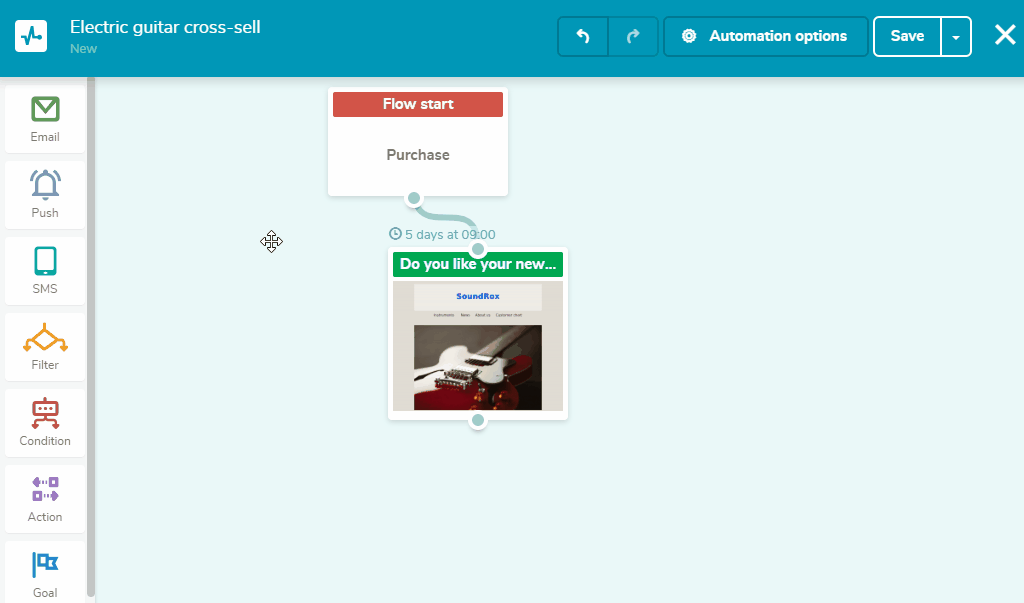
You don’t need any coding skills to use SendPulse. Here’s a step-by-step guide to sending automated emails.
Best Cross-Selling Strategies and Examples to Boost Sales
- Send cross-selling emails with product recommendations
- Provide additional services
- Make use of discounts and free shipping
- Create complementary item suggestions
If you combine advanced tools provided by SendPulse with the best cross-selling strategies, your business is bound to succeed. Right now, you can get acquainted with wonderful practices you can start using after reading this article.
Send cross-selling emails with product recommendations
Using cross-selling emails is one of the most popular and easiest ways to encourage your customers to buy additional items. For example, you can send emails that provide people with a chance to buy various items and accessories to complement what they’ve already bought. Check out how Amazon uses this technique.
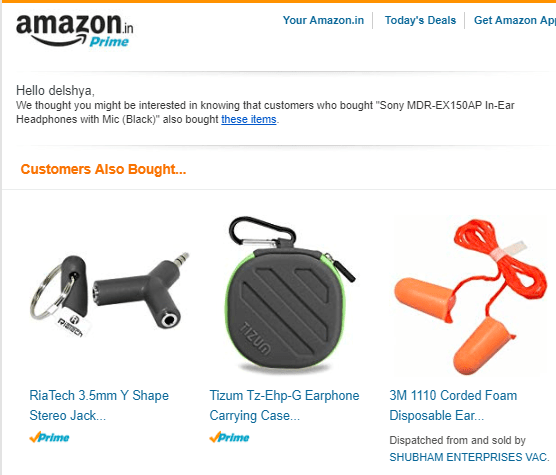
Provide additional services
Offering a case and a special guarantee when selling a smartphone perfectly illustrates this strategy. Your task is to provide really valuable services that users will need when using your product.
Apple offers an extended warranty and repair coverage when buying an Apple Watch.
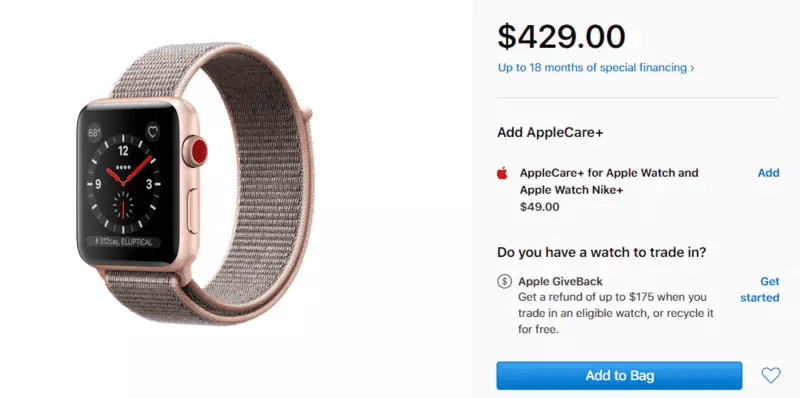
Make use of discounts and free shipping
Everyone wants to save money, provide discounts to your customers from time to time. For example, offer them to buy an additional item and free shipping. At the same time, you may offer them to get 3 similar items for the price of the one to encourage them to make more purchases.
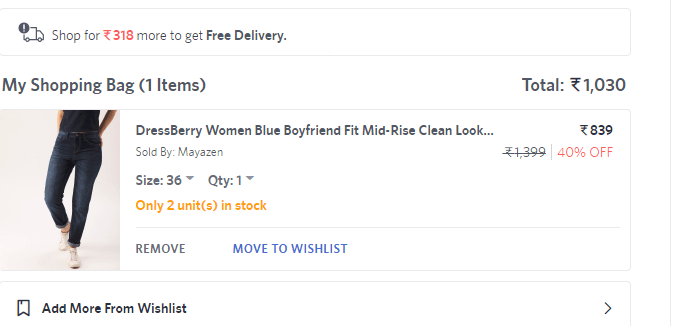
Create complementary item suggestions
You can offer your clients products that are usually bought together. Monitor their purchase history and create combinations of items that complement each other. Check out the way iHerb puts this technique into practice.
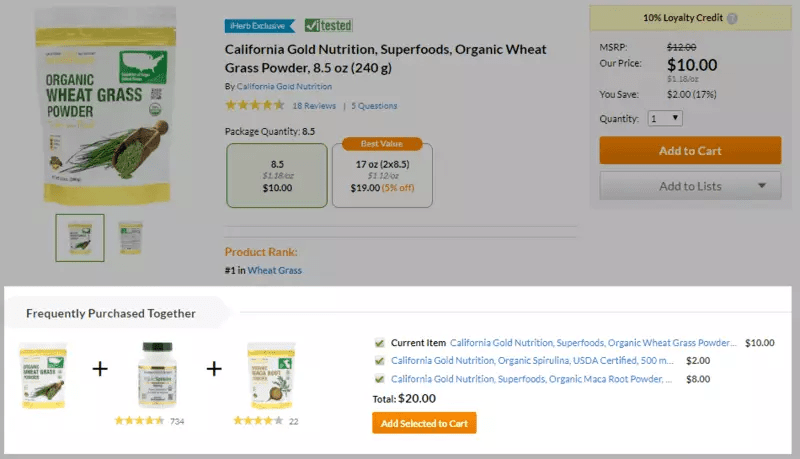
As you can see, cross-selling isn’t only a great chance to increase your income, but also to satisfy your clients and provide them with useful products. There are no doubts that if you follow all the strategies and tips provided above, you’ll manage to increase your sales level in no time. Besides, don’t forget to use both cross-selling and upselling strategies to reach the best results.
References
- The article defines the term, compares cross-selling to upselling, provides examples and best practices to follow.
- The article gives practical tips on how to upsell and cross-sell.
- The article covers cross-selling in terms of tips, methods, and the best time to start.
Last Updated: 22.03.2023

or